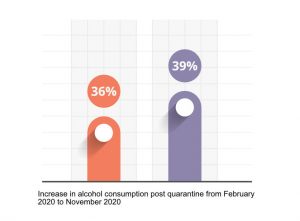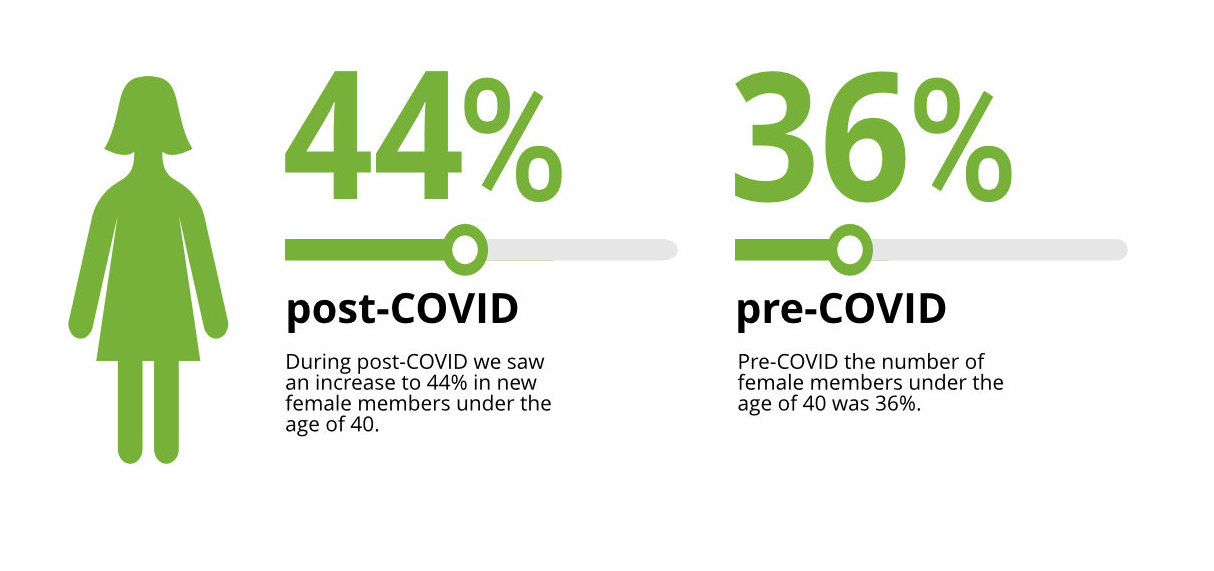During the Pandemic, a Rise in Drinking, Especially Among Women

As the pandemic continues, recent studies have revealed some of the effects on alcohol consumption. The statistics show rising rates of alcohol use—especially among women. Women with children are especially vulnerable, given increased responsibilities at home. But there’s good news. Broadening adoption of telehealth can make access to alcohol treatment more convenient, and provide new models for care.
COVID Increased Drinking Everywhere
In March 2020, COVID-19 changed the world forever—including consumption of alcoholic beverages. In September of 2020 the Substance Abuse and Mental Health Services Administration (SAMHSA) released its 2019 National Survey on Drug Use and Health (NSDUH). Included in its findings: “Among the 139.7 million current alcohol users aged 12 or older in 2019, 65.8 million people (47.1 percent) were past month binge drinkers.”
In May 2020, RTI International published a study showing a rise in drinking once quarantine began—an increase among adults of 36% from February through April. A follow-up study, published in August 2021, charts drinking from February through November 2020. It shows a 39% increase in alcohol consumption.
Further, the numbers of people exceeding drinking guidelines increased, as did the numbers of people reporting binge drinking. The NIAAA defines “binge drinking” as 5 drinks in two hours for men, or 4 for women.
The Rise in Drinking Among Women
Women remain more vulnerable to alcohol issues, both because of genetic differences and social ones. The Centers for Disease Control (CDC) notes that though men often drink larger amounts of alcohol, “biological differences in body structure and chemistry lead most women to absorb more alcohol and take longer to metabolize it.” They add that after drinking the same amounts of alcohol, women’s blood alcohol levels are greater.

At Yale University, the Department of Psychiatry at the School of Medicine has a center studying sex differences in alcohol use disorder. The program notes, “A considerable body of data identifies that women are more likely to drink to regulate negative affect and stress, while men are more likely to drink for alcohol-related positive reinforcement.”
The Yale program also notes a marked difference in men and women’s patterns of alcohol use. “Over the past ten years, rates of alcohol use disorder have increased in women by 84%, relative to a 35% increase in men.”
Telehealth Offers Convenient New Options
Telehealth has increased access to healthcare services of all kinds. During the pandemic, when many people were cautious about leaving home and social interaction, these services grew substantially. The CDC reports that use of telehealth among healthcare centers increased over 30% from June to November in 2020.
An article from McKinsey & Co. in July confirms the increase. Following an initial spike in April 2020, telehealth use has “stabilized at levels 38 times higher than before the pandemic.”
At Ria, our own statistics show that both pre- and post-COVID, about 56% of our members were women. Before COVID appeared, 36% of those were women under 40, but after March of 2020, that number increased to 44%.
It is clear that the need is growing for effective, convenient treatment for alcohol use disorder, especially among women. Telehealth has made it possible to realize our mission: to increase access to evidence-based treatment, using medication, harm reduction, and counseling. We continue to monitor demographics to determine the need for Ria’s innovative approach.
Will insurance cover treatment? Verify Coverage
Have Questions? Call (800) 504-5360





